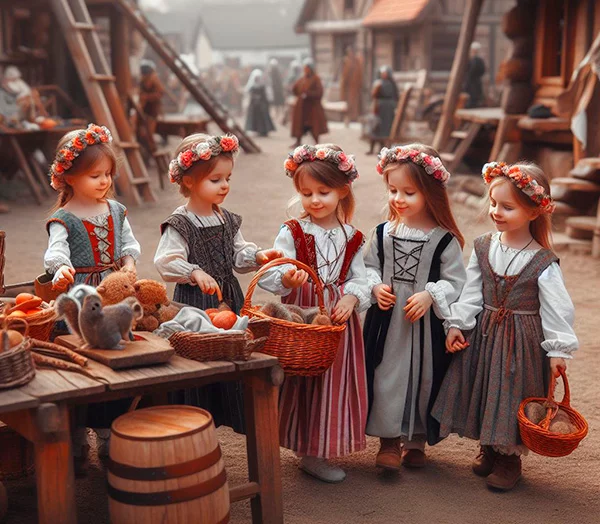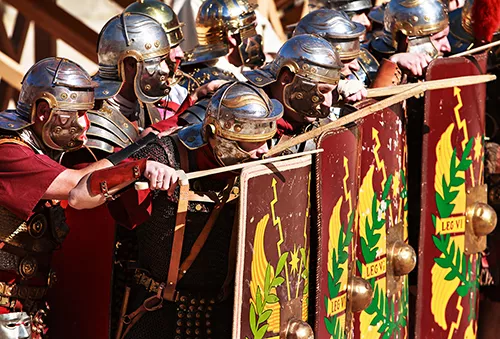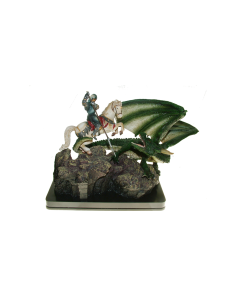religious crafts
The Meaning of Religious Craftsmanship
Religious craftsmanship encompasses a rich tradition that unites faith with creativity. This form of art not only seeks to beautify worship spaces but also carries a profound spiritual meaning. Many of these objects are used in religious ceremonies, symbolizing beliefs and values that have endured over time.
In each piece, from the largest to the smallest miniatures, a story and a process of creation filled with devotion are reflected. Religious craftsmanship is a vehicle for the expression of faith and, in turn, a testament to the talent of the artisans dedicated to this noble craft.
Styles and Techniques in Religious Craftsmanship
There are various techniques employed in the creation of religious craftsmanship items that vary by region and cultural traditions. From wood carving to metal forging, each method has its own distinctive style. For example, the miniatures of religious figures often require meticulous attention to detail, resulting in exquisite pieces that capture the essence of the characters represented.
Moreover, the use of different materials also introduces a variety of styles. In some cultures, traditional materials like stone or wood are preferred, while in others, glass or ceramics may be used. These choices not only affect the appearance of the pieces but also their durability and the impact they have on those who contemplate them.
The Importance of Religious Craftsmanship in Culture
Religious craftsmanship is not only relevant from a spiritual perspective, but it also plays a fundamental role in local culture. Each piece can serve as a reminder of the historical roots and traditions of a community. Elements such as rosaries, figures of saints, and other representations have been part of the daily lives of many people, helping to connect generations through their shared beliefs.
These religious objects act as a bridge between the divine and the human, facilitating prayer and reflection. When used in worship and devotion, they contribute to a sense of community and belonging, strengthening the bonds between the faithful and their faith.
How to Care for and Maintain Religious Craftsmanship
Preserving the beauty and significance of religious craftsmanship pieces is essential for their longevity. It is important to take proper care of these objects, avoiding prolonged exposure to direct sunlight or extreme humidity conditions. Depending on the material, regular cleanings with specific products that do not damage the surfaces of the pieces may be necessary.
Care varies, but it is recommended to maintain a suitable environment where each piece can be admired and respected. Additionally, learning about the history and tradition of each object is advisable to understand its value and meaning within the religious practice.
Incorporating Religious Craftsmanship into Your Home
Integrating religious craftsmanship into home decor can add a unique and meaningful touch to any space. Whether it’s a figure of Saint Matthew the Evangelist or a medieval rosary, these items not only beautify the environment but also create an atmosphere of peace and spirituality. By placing these objects in visible locations, such as altars or shelves, one invites contemplation and spiritual connection.
Furthermore, the diversity of styles allows each person to find a piece that resonates with their own faith and personal aesthetics. Thus, the home transforms into a space filled with meaning and tradition, where each element tells a story and reflects the devotion of those who inhabit it.
What types of materials are used in religious craftsmanship?
Religious craftsmanship can include a variety of materials, from wood and stone to metals and ceramics. Each material offers different aesthetic and symbolic characteristics. For example, wood is often used for carvings due to its warmth and ease of handling, while metal may symbolize strength and durability. The choice of material can influence not only the appearance of the piece but also its meaning within the religious context.
What is the history behind religious craftsmanship?Religious craftsmanship has roots dating back thousands of years, where different cultures have created sacred objects to honor their beliefs. From ancient temples to modern churches, pieces have been used in ceremonies, rituals, and as sacred decorations. Each era and civilization has contributed its style and techniques, creating a rich cultural legacy that is still valued today.
How to choose a piece of religious craftsmanship?When choosing a piece of religious craftsmanship, it is essential to consider the meaning behind each object. Ask yourself what message or symbolism you wish to incorporate into your life or home. Additionally, consider the quality of the piece and the skill of the artisan. Well-crafted works not only have greater aesthetic value, but they also represent an effort and dedication that deserve appreciation.
Is it possible to give religious craftsmanship as a gift?Giving religious craftsmanship can be a meaningful and symbolic gesture. These pieces are not only beautiful but also convey values and beliefs. By gifting a religious craftsmanship object, one offers a present that can serve as a source of inspiration and faith for the recipient. Additionally, consider the recipient's personal connection with the piece and its significance in their spiritual life.
How can religious craftsmanship pieces be displayed at home?Displaying religious craftsmanship pieces at home can be an opportunity to beautify spaces in a meaningful way. You can place sculptures or figures on altars, shelves, or small tables, ensuring good lighting to highlight their beauty. Display cases or shelves can also be used to protect pieces from dust and damage. The key is to create an environment that invites contemplation and spiritual closeness.
What differences exist between religious craftsmanship from different cultures?The religious craftsmanship of different cultures presents a variety of styles, techniques, and materials, depending on their traditions and beliefs. For example, Christian iconography may differ significantly from Buddhist iconography, both in the representation of figures and in the use of symbolism. Each region has its unique style that reflects not only local artistic influences but also its history and spiritual values.
Are reproductions of ancient religious craftsmanship made?There are many artisans who specialize in creating reproductions of ancient religious craftsmanship. These reproductions offer the opportunity to enjoy the beauty and meaning of historical pieces without the high costs associated with original works. However, it is essential to ensure that the reproductions are of quality and respect the authenticity of the design and technique of the period from which they originate.
Explore our fascinating selection of religious craftsmanship, where each piece tells a story of faith. The variety of styles and materials will allow you to find the perfect object that resonates with your spirituality. Visit our online store and discover the meaning behind each item.


















